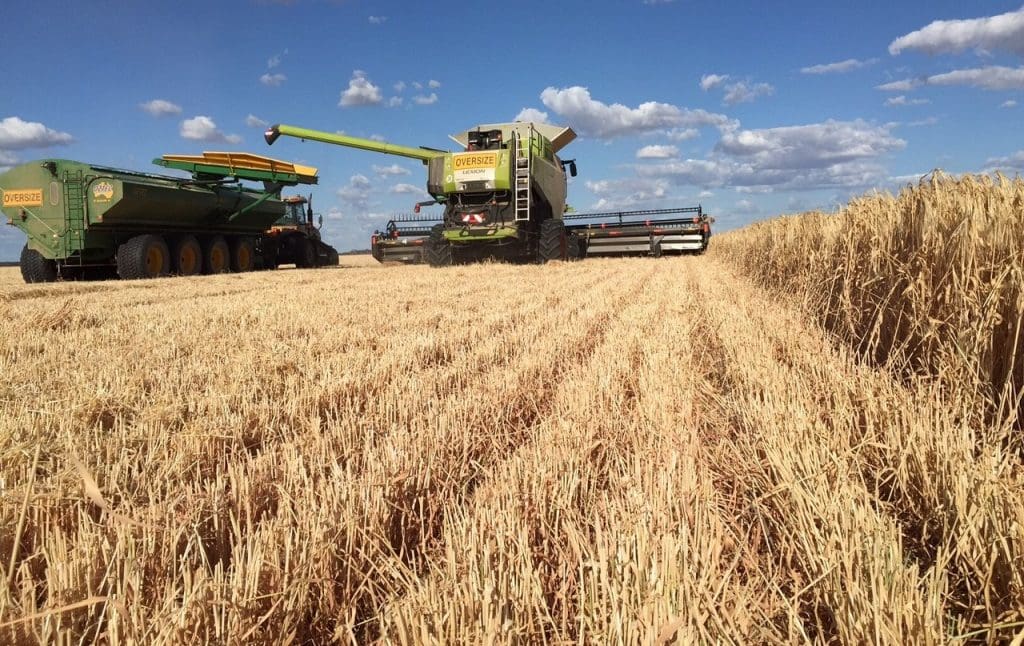A YEAR ago I sat down with my son Julian Thomas and did some focussed research with the objective of trying to identify the attributes which would be necessary for successful investment into broad acre farming in Australia.
We were curious about whether Australian broadacre farming would be a stable and attractive asset class to investors – both to ourselves as small private investors – and also whether the asset class would appeal to large global and institutional investors.
We collated some of our research into a paper, which had the following executive summary:
Attributes of successful investment into Australian broadacre farming
The medium and long-term prospects for Australian agriculture are fundamentally positive, but the sector as a whole faces several key challenges in securing future prosperity.
A growing global population and increased demand for high-quality product creates a strong demand which we are well positioned to fill.
Australian agriculture is highly efficient, and at present Australia has a comparative advantage in primary production.
Low average returns disguise the reality that many farms are poorly run or minimally viable – the clear majority of total Australian agricultural output derives from a tiny minority of top-performing farms with excellent and reliable annual returns, which at scale is potentially highly attractive to international investors.
Like many human activities, agriculture contributes to global climate change. However more sustainable production techniques assist in mitigation of these effects. In the absence of a market price on carbon emissions and other environmental mismanagement, or of widespread adoption of international standards for sustainable development, the short-term interests of farmers are misaligned with medium- and long-term continued productivity growth.
Given an increasing government and community focus on sustainability, future opportunities exist for lucrative public/private partnerships around natural resource management which have yet to be fully explored.
With shrinking rural populations, the availability of skilled labour is a potential limiting factor.
This problem will be further exacerbated by the increased knowledge and skills threshold to engage with future agricultural technology, however operators are reluctant to invest in upskilling their often seasonal and temporary workforce, instead relying on temporary contractors to fulfil key roles.
This ‘hollowing out’ issue is covalent with decreasing public sector investment in agricultural R&D and vocational education, leading to a decline in the renewal and growth of agricultural innovation and educational curricula and investment.
With most of the land suitable for broad acre farming already under production, future prosperity will derive from embracing agricultural technology and sustainable development, the two key areas the top performers are already embracing and heavily investing in.
A lack of public spending in this area has been mitigated to an extent by increased private sector investment, but such investment is usually limited to refinement rather than ‘blue sky’ innovation.
It is likely that the key technologies behind future productivity increases will be:
1. Precision monitoring and information systems, enabling farmers to make smarter decisions faster;
2. Continuing the automation trend, driving up productivity and driving down expenses by freeing human operators from routine tasks;
3. Incorporating cutting-edge advancements in crop nutrition, bio genetics and selective breeding into routine farming operations, increasing yields with every generation; and
4. Tailoring machinery requirements and farm operations to each operation through bespoke hardware and software, driving increased productivity and enabling radical approaches to capturing all possible outputs for profit.
We conclude that successful investment in Australian broad acre agriculture should therefore have the following attributes:
1. Sufficient scale to maximise capital and process efficiency.
2. Be innovation driven through by integration of network based skills and technologies that are applied actively and developed quickly at micro farm level and then multiplied across the business.
3. Be sustainable, be in sync with community; and embrace all potential opportunities for revenue generation offered by the land footprint occupied, including carbon, water and energy.
4. Actively embracing the opportunity to overcome the Australian and global skills shortage in agriculture through repositioning food production and land management as an innovative and vital sector full of opportunity.
Looking back a year later, I think we would draw the same conclusions.
Australian broadacre agriculture has strong potential, if investors are willing to engage through an investment framework that carefully deals with the above issues and with sufficient scale.
In particular – the skills shortage must be comprehensively addressed for investors to be able to maximise the potential.
And in addition – investors need to be embracing sustainability and technology as key enablers of productivity.
The views expressed here are entirely the personal conclusions of the authors David and Julian Thomas, and not of any organisations they may work for or be associated with.





HAVE YOUR SAY